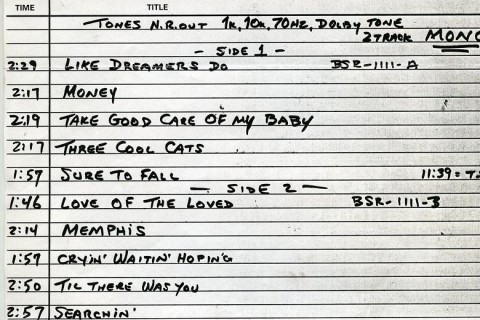Stargazers of all ages will enjoy the latest Google experiment designed for Chrome. One Hundred Thousand Stars (access it here) is an interactive map of space including the locations of—you guessed it—more than 100,000 stars. (Note: Before you experience the map, you will need to download the Chrome browser.)
Rendered in three dimensions, our knowable, mapped galaxy is both staggeringly vast and easy to navigate. With imagery and data from NASA and the European Space Agency, Google’s Chrome Workshop built a 3D model of our little corner of the universe.
You can preview One Hundred Thousand Stars above. Or you can enter the map, click on the upper left corner, and take a tour of your own. You’ll start just beyond the stars that astronomers have studied and named. Swipe all the way into our own solar system. The first thing you’ll notice is that Pluto isn’t included, inviting a new mnemonic for the planet names (My Very Earnest Mother Just Served Us Nectarines?). That hazy cloud about a light year from the sun is the Oort Cloud, a mass of comets that’s thought to mark the outer edge of the sun’s gravitational pull.
Swipe out a bit to see 87 relatively nearby stars. Click on their names to read about them. Sirius is the brightest in the night sky, partly because of its own luminosity but also because it is comparatively close to Earth. Vega is so well studied that its brightness is used as the baseline to classify stars according to their color.
Swipe out further for a galactic view of the Milky Way. It appears as a beautiful illuminated disc centered around a bright bulge. This shape is called the Galactic Plane. Click and drag to tilt the disc this way and that. Totaling to some 400 billion stars and as many planets, the Milky Way does in fact bulge at its center, though astronomers think that the true core is really an intense black hole.
Notice the tiny icon to “Toggle Spectral Index” up in the left corner. On one setting, each cloud is pixilated to highlight its color (a key identifier for astronomers).
Here’s where it helps to know a little about stars and how they form. Stars begin as clouds of mostly hydrogen, becoming gradually so dense through the process of nuclear fusion that even gravity cannot make them fly apart.
The amount of light a star gives off is measured as different colors and temperatures. “Hotter” stars are younger and give off more blue light, and so are indicated as blue. “Cool” stars are older, give off less blue light, and are indicated as red.
By the way, the music behind One Hundred Thousand Stars is by Sam Hulick, whose music gamers may recognize from Mass Effect.
We’re adding One Hundred Thousand Stars to our new collection: 200 Free K‑12 Educational Resources: Video Lessons, Mobile Apps, Free Books & More.
Kate Rix writes about digital media and education. Visit her website and her blog, thenifty.blogspot.com.



